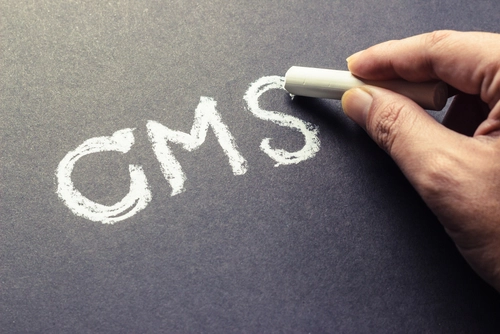Address 99285 Concerns With 3 Tips

Tip: Ensure your documentation backs up the higher-level E/M code. Whether you bill 99285 (Emergency department visit for the evaluation and management of a patient...) for every encounter or you reserve this high-level E/M code for special occasions, your notes must support the level of care. That’s why knowing the ins and outs to ensure your documentation is in line with the guidelines is critical. Read on for an emergency department (ED) refresher on how to bill this high-level code. 1. Know the Elements To report 99285, CPT® indicates, “usually, the presenting problem(s) are of high severity and pose an immediate significant threat to life or physiologic function.” But that isn’t all you need — the documentation must also support a comprehensive history, a comprehensive exam, and high-complexity medical decision-making. To achieve the comprehensive history, the physician should document 10 or more systems in the Review of Systems (ROS), four history of present illness (HPI) elements, and two of the three past, family, and social history (PFSH) elements. For a comprehensive exam, the physician must document the eight or more organ systems that were examined (including the affected area). In addition, the physician must calculate medical decision-making of high complexity. 2. MDM Is Not Enough EDs often report that physicians will tally up very high MDMs, leading them to select 99285. However, E/M services in the ED require you to document and meet all three requirements — history, exam, and MDM — to meet each level of E/M service. This is different from outpatient E/M codes, which require you to meet only two of the three levels for established patients. So a high-complexity MDM is necessary for reporting 99285, but not on its own. You still need the comprehensive history and exam clearly documented in the record. Tip: “Medicare contends medical necessity to be the overarching criterion for E/M level selection. Therefore, while medical decision-making [MDM] is often the most important element and is closely related to medical necessity, it is not completely synonymous,” says Kelly C. Loya, CPC-I, CHC, CPhT, CRMA, associate partner, Pinnacle Enterprise Risk Consulting Services LLC. Loya continues, “Therefore, when MDM does not meet the level of the performed and documented history and examination, you do not have to automatically ‘downcode’ the service to the level of the MDM. Consider the nature of the presenting problem, and need for a higher level of history and exam to evaluate whether the E/M level can accurately support the level using the other two components. If those are justified, the higher code may apply. If not, the code supporting MDM is the most appropriate choice.” For instance: Suppose a patient comes to the ED complaining of pain in the left side of his head, nausea, and weakness. You perform a CT scan and lumbar puncture to rule out a subarachnoid bleed, and the documentation reveals four HPI elements, six ROS, two PFSH, and eight organ systems examined. Because of the conscious sedation for the lumbar puncture, the MDM supports a risk of level five. In this case, the chart does not meet the criteria for 99285, because the ROS falls short of the 10 elements required for a comprehensive history. Instead, the six-element ROS supports only a detailed history, which bumps the correct code level down to a 99284. Caveat: If, for some reason, the patient’s condition prevents the physician from performing a complete ROS, the reason should be in the documentation, which could allow the practice to report 99285 under the ED acuity caveat rule, which allows you to document the history and physical exam that is reasonably obtainable from a severely ill patient, thus letting you move past this requirement when all other elements support a 99285. However, if you use this rule, your documentation must clearly state why you were unable to obtain a complete ROS. 3. Know When Critical Care Usurps 99285 In some cases, ED physicians will report 99285, even when the documentation would be better suited for a critical care code. Because critical care codes reimburse at a higher level than the ED codes, you could be throwing money away if you are unable to recognize the difference between a 99285 and a critical care service. Consider this example: The local emergency medical service brings a motorcycle accident patient to the ED, and you diagnose the patient with a femoral shaft fracture of the left leg. Additionally, the patient’s distal left foot appears dusky and cool to the touch. Distal pulses are not palpable. The ED physician splints the entire extremity, places a Foley catheter to monitor urine output, and starts an IV to maintain cardiac output and minimize the likelihood of shock. Then, the provider contacts a specialty hospital, which accepts the patient in transfer but advises that the ambulance will take 60 minutes to arrive. During the 60-minute interval, the ED physician spends 30 minutes in and out of the patient’s cubicle checking for pulses, adjusting the splint, and monitoring cardiac output. However, the time spent attending to the patient, also including initial evaluation, review of the patient’s x-rays, discussion of the case with the receiving trauma surgeon, and follow-up of the patient’s condition totals 60 minutes. This excludes time spent placing or adjusting the splint, which is billed separately. This service meets the critical care requirement of direct delivery by a physician of medical care for a critically ill or injured patient, and you should report 99291 (Critical care, evaluation and management of the critically ill or critically injured patient; first 30-74 minutes) as well as the code for the long leg splinting (29505). Append modifier 25 (Significant, separately identifiable evaluation and management service by the same physician or other qualified healthcare professional on the same day of the procedure or other service) to 99291 to designate it as separately identifiable from the splinting.




